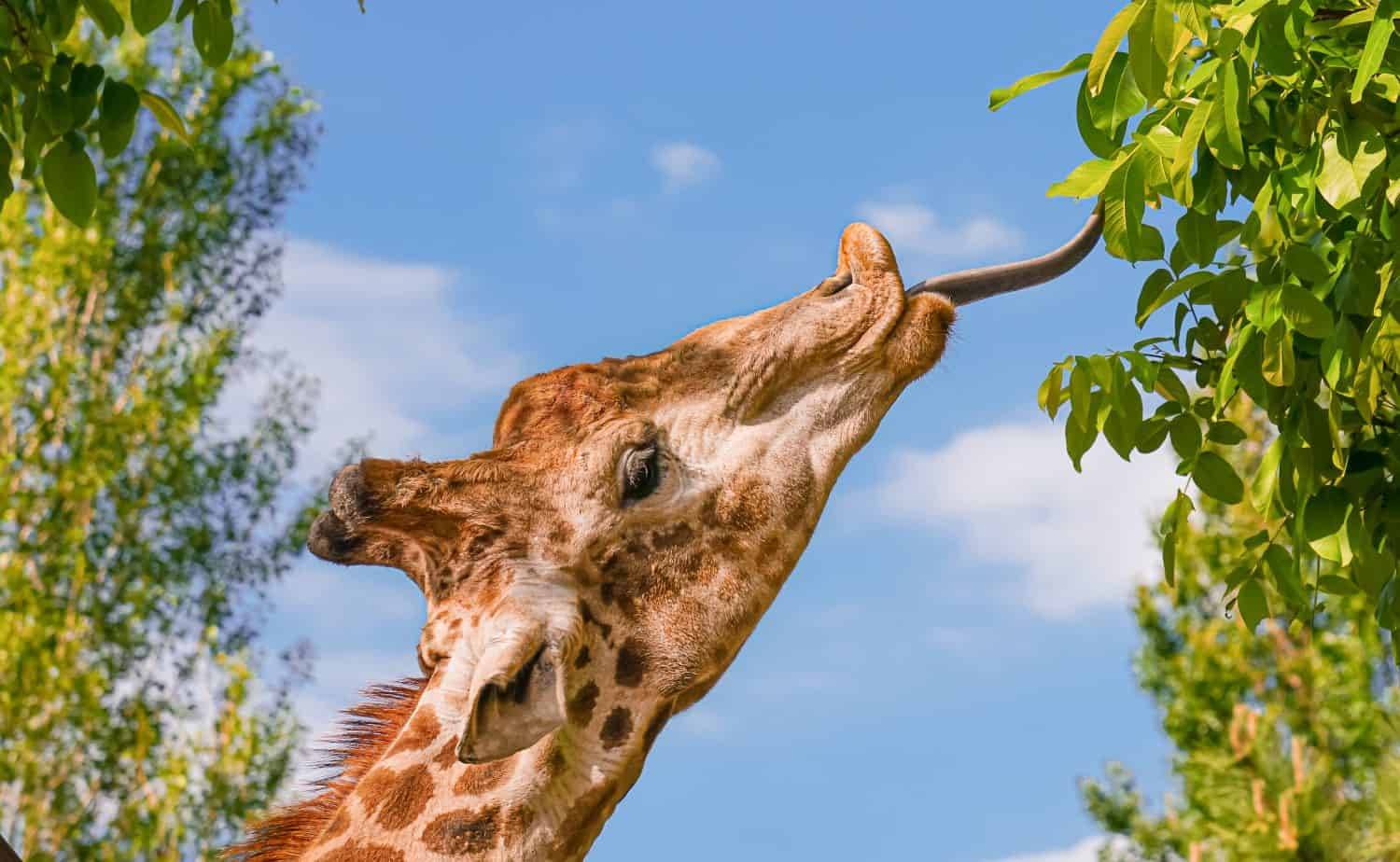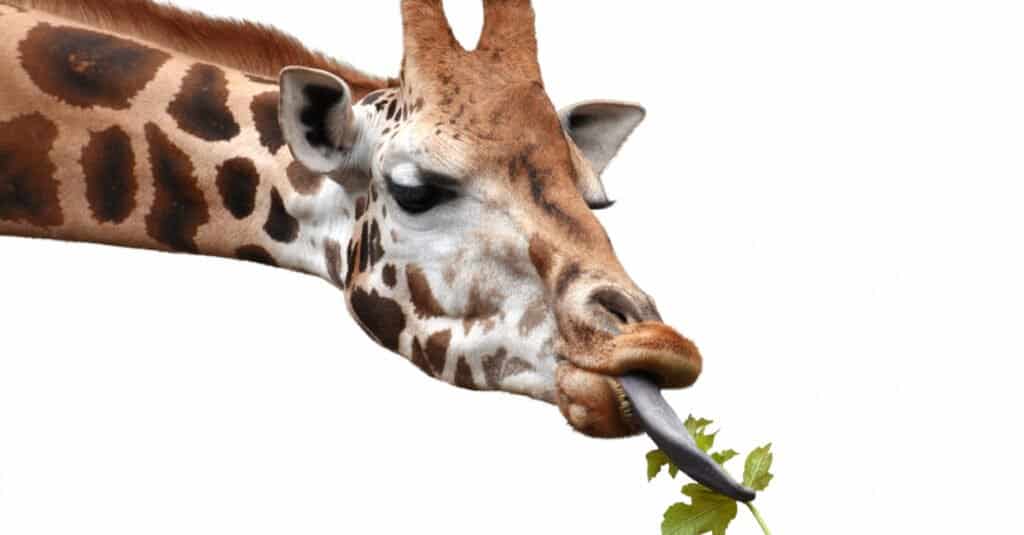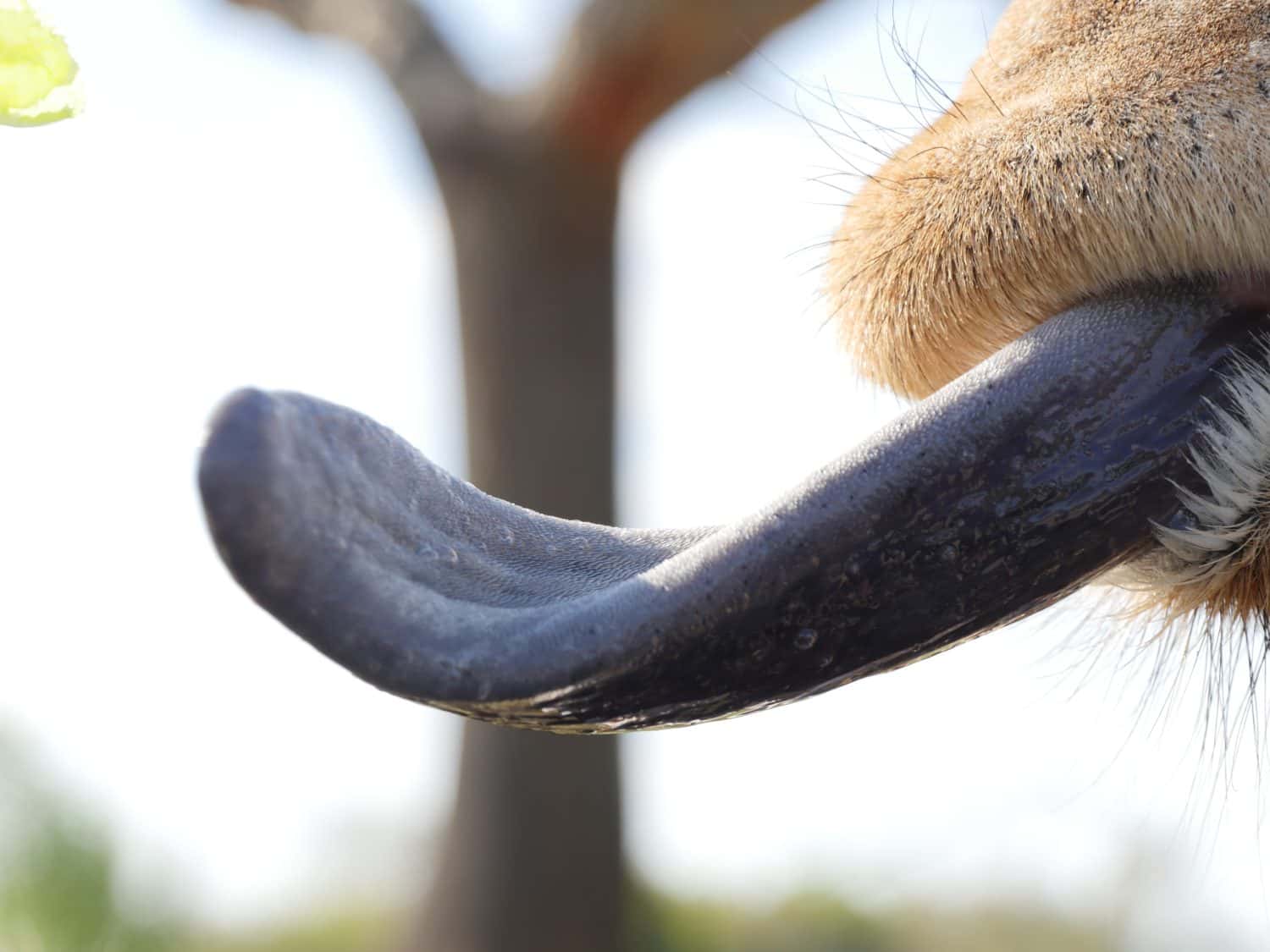
Giraffe tongues may be a color you’re not quite expecting to see.
©marseus/Shutterstock.com
Have you ever seen a giraffe in the zoo and realized that its tongue doesn’t quite look like yours? Not only are they crazy long, but they are a different color than you might expect. Giraffe tongues have unique colors, and for a good reason.
Giraffes tend to have two colors on their tongue. The tip is often dark blue, purple, or black. Then, the base, or back of the tongue is a shade of pink more commonly associated with tongues. The darker color comes from an increased number of melanin color pigments known for adding black and brown shades to the skin.
If you want to learn more about giraffe tongues, continue reading below.
What Color Is a Healthy Giraffe Tongue?
You may find yourself concerned when you realize that a giraffe’s tongue is black, blue, or purple for the first time. It isn’t all that hard to imagine that the poor giraffe managed to damage their tongue somehow, leaving a painful bruise.
Though those colors are usually associated with bruising or injury in people, it’s a normal color on giraffes. Every one of these long-necked animals should have a tongue that’s dark on the ends because it’s a normal and healthy color.
Sometimes, the tongue may be one solid dark color that fades into pink. For some giraffes, though, you’ll find various shades of purple, blue, and black at the tip before it fades to pink.
What Allows a Giraffe’s Tongue to Change Color?
Melanin is the pigment that provides giraffes with their darker-colored tongues. Melanin provides pigments that are black or brown. It’s found in people’s skin, eyes, and hair.
It doesn’t just add color to cells, though. Melanin also protects against UV rays that harm the body. By absorbing the light, it stops cellular damage. These are the two primary purposes of melanin in the body, whether it is human or animal.
How Does a Long, Dark Colored Tongue Help a Giraffe Survive?

Giraffe tongues are a little strange at first but are quite useful to the animal.
©NAPA/Shutterstock.com
Scientists aren’t fully sure why giraffes have such unique tongue colors. Many do agree that the current working theory, though, is that giraffe tongues are often hanging out of their mouth as they collect food. Since they live in areas where it’s common to get high levels of UV radiation from the sun, it makes sense that they could potentially sunburn their tongues.
A sunburned tongue wouldn’t be pleasant for anyone, much less an animal that relies on their tongue to grab and pull food. With darker tongues and more melanin in their cells, a giraffe reduces the chances of having their tongue sunburned.
Studies have shown that melanin absorbs some UV radiation produced by the sun, which supports the theory. More research needs to be done to confirm if this is actually the case, but it’s a solid theory.
This would also explain why their tongue isn’t all one solid color. Since the back end of a giraffe’s tongue doesn’t leave their mouth, there’s no need for it to be darker.
The darker tongue isn’t the only way that giraffes have adapted to protect their tongue. They also produce a mucus that coats it. This keeps their tongue safe from thorns and splinters.
The thick mucus also holds moisture so that the harsh and dry environment doesn’t damage the surface. It’s also said to have antiseptic properties to help heal any injuries that do occur. This mucus comes in the form of thick saliva.
How Do Giraffes Use Their Tongue?
Giraffes rely heavily on their tongue. It not only allows them to grab food but their tongues are also used during many interactions.
Giraffes have been observed to communicate with one another by twining their tongue with other giraffes. Tongues are also the best way to groom, especially when it comes to ears and face.
Because of their size, and the fact that plants aren’t very nutritionally dense, most giraffes have to spend about 12 hours a day grazing. By the time they are finished for the day, they will have eaten somewhere near 75 pounds of food. Between eating, grooming, and socializing, giraffes have their tongues out more often than they don’t. It makes sense that they’ll need a little protection.
How Long Are Giraffe Tongues?

The tongue of a giraffe is long, dark, and covered in thick saliva.
©Dallong/Shutterstock.com
Giraffe tongues are a lot longer than you might expect. On average, they are about 20 inches from base to tip. There are also a lot of muscles within their tongue that allow for ultimate flexibility. Together, these features make for the perfect tool to allow them to grab plants high up.
The photo featured at the top of this post is © © daumiu/iStock via Getty Images
Thank you for reading! Have some feedback for us? Contact the AZ Animals editorial team.







